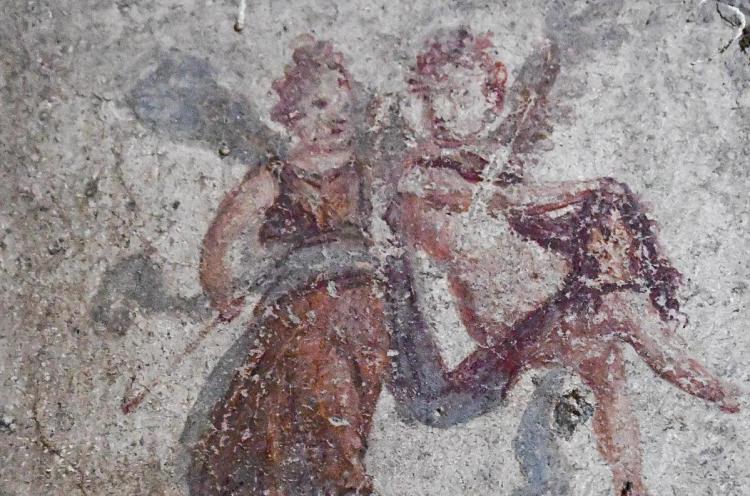The horse’s big buck teeth were still faintly white, despite being buried beneath volcanic ash for more than 2,000 years.
In the stable where it died, the horse lay on its side, its legs bent slightly at the knee, its jaw open and jutting into the ground. Like the roughly 2,000 people and countless animals in Pompeii in 79 AD, the horse likely died instantly when an enormous plume of ash engulfed the ancient Roman city following one of the most cataclysmic volcano eruptions in history.
But had it not been for pesky tomb raiders, the horse – and various relics and age-old structures – might never have been found.
Last week, the Archaeological Park of Pompeii unveiled some recent discoveries at the site of Civita Giuliana outside the city walls stemming from its latest excavation. The excavation began last August after authorities discovered illegal tunnels surrounding the ancient community, creating an urgency to preserve whatever was left before more looters gained access, the Archaeological Park of Pompeii said on its website.

The remains of a horse recently uncovered at Pompeii.
Along with the horse, whose skeletal remains were preserved intact, archaeologists found four rooms and the horse stable, a tomb containing the remains of an adult man, a wooden bed and an entire street of grand houses with large balconies.
The horse, however, was described as an “extraordinary find,” because for the first time in Pompeii, archaeologists were able to completely reconstruct a horse using a plaster casting technique.
The horse is just under 5 feet tall, measured from its shoulders to the ground, but is believed to be an adult, according to the archaeologists’ summary of the discovery. The exact species of the horse is unknown, the report says, but will be studied later. Despite its height, the report says the horse was likely large for that time period.
“One must bear in mind that ancient horses were probably much smaller compared to those alive today,” the Archaeological Park of Pompeii wrote.
To reconstruct the horse, archaeologists used the same process invented by 19th century Italian archaeologist Giuseppe Fiorelli, one of the pioneering Pompeii preservationists. Fiorelli was the first to realize that he could capture the last moments of the victims of Mount Vesuvius’s monstrous eruption. The bodies appeared to be frozen in time, still cowering fearfully as the volcanic rocks and suffocating ash enveloped their homes and streets. Fiorelli identified cavities in the volcanic material that encased them, then filled the cavities with liquid plaster, thus creating a cast of the victims’ last movements and expressions.
The archaeologists did the same thing to the horse, which according to Italian press joins a pig and a dog as the third animal to undergo the plaster casting technique for preservation.
This horse, the archaeologists note, appears to have belonged to a “noblest breed.” Around the horse’s skull was an iron harness with small bronze studs, which “could attest to the value and role of this animal.”
The Archaeological Park of Pompeii says a second animal appears to be in the stable, but only its legs are intact.
Send questions/comments to the editors.



Success. Please wait for the page to reload. If the page does not reload within 5 seconds, please refresh the page.
Enter your email and password to access comments.
Hi, to comment on stories you must . This profile is in addition to your subscription and website login.
Already have a commenting profile? .
Invalid username/password.
Please check your email to confirm and complete your registration.
Only subscribers are eligible to post comments. Please subscribe or login first for digital access. Here’s why.
Use the form below to reset your password. When you've submitted your account email, we will send an email with a reset code.